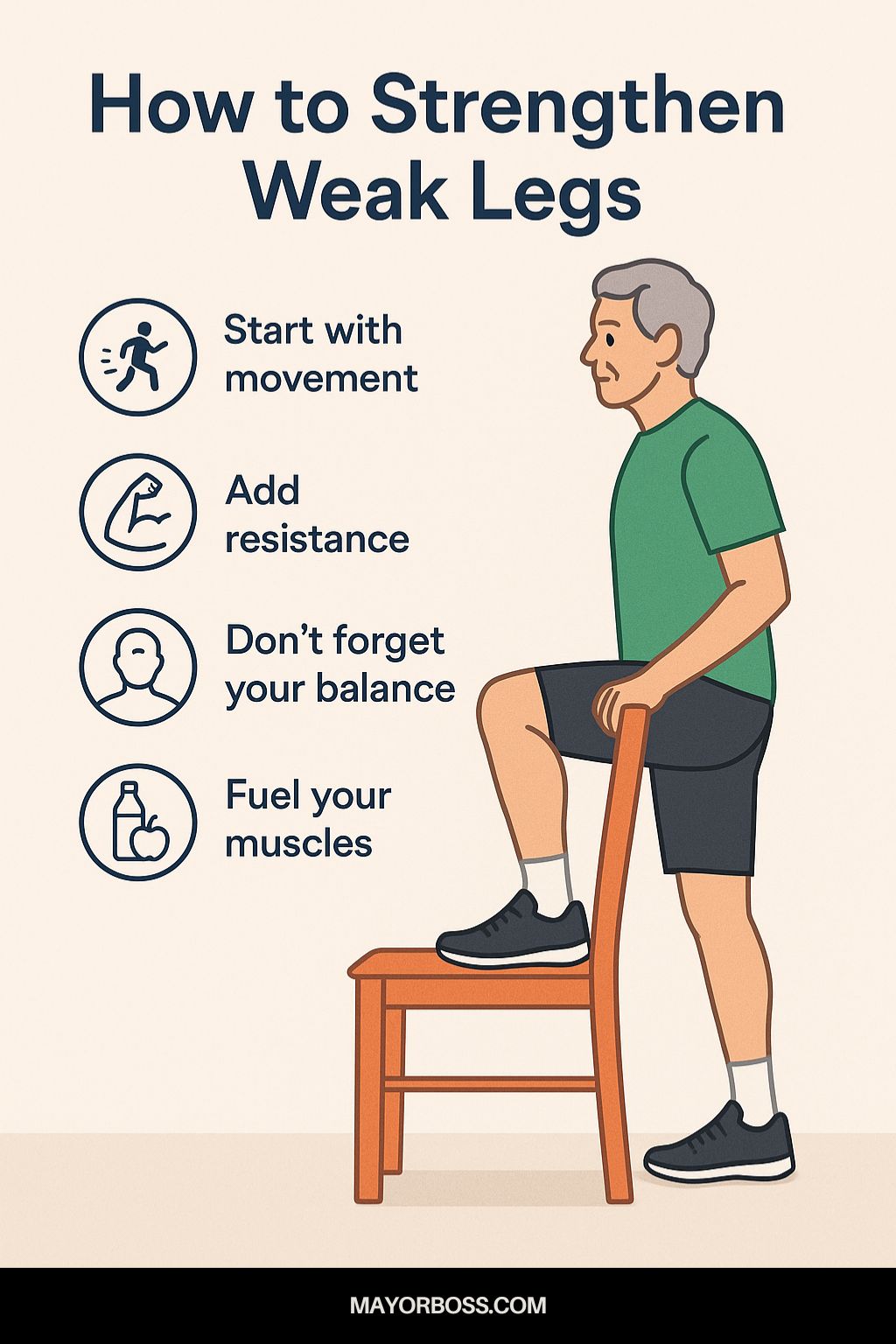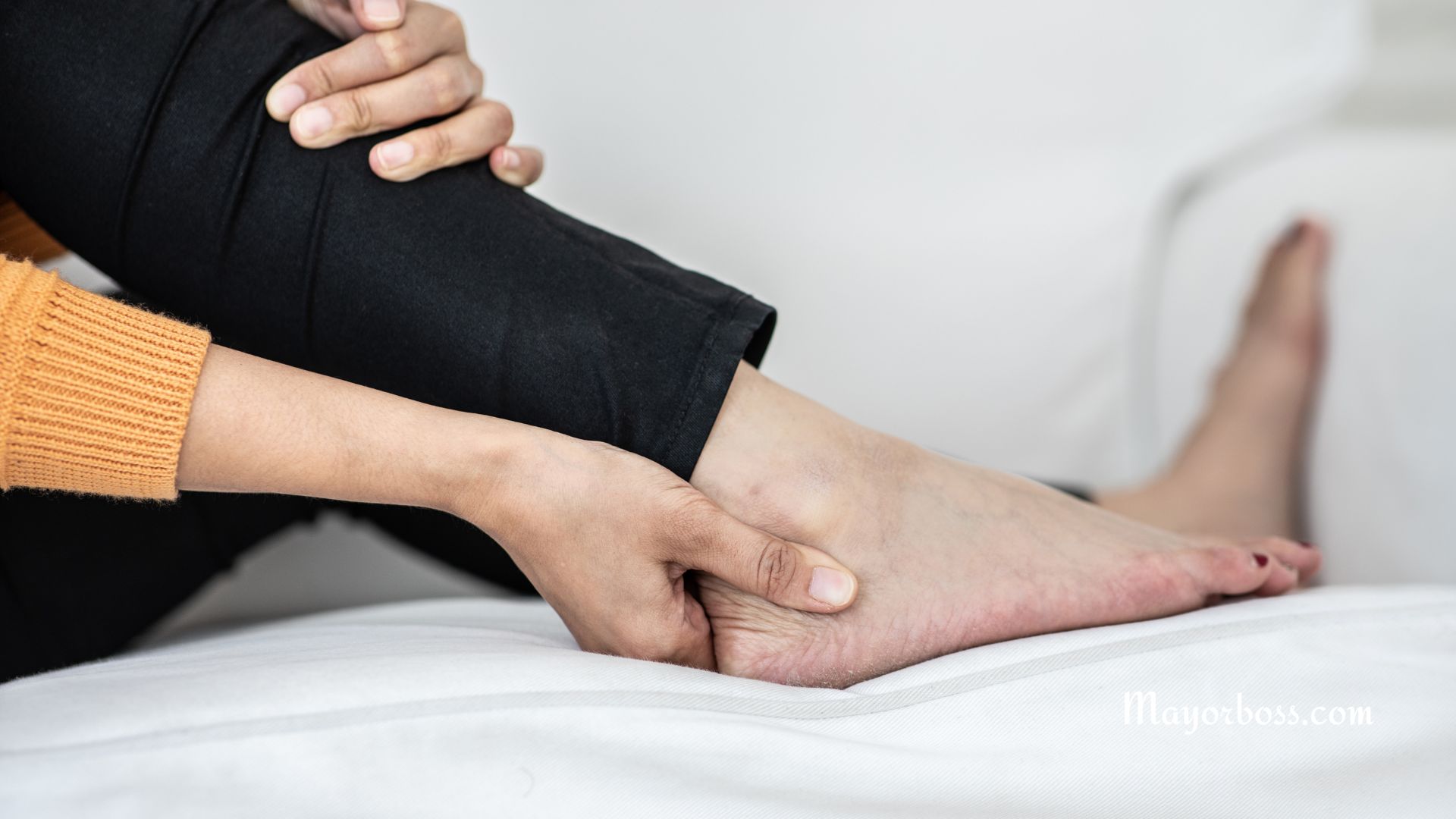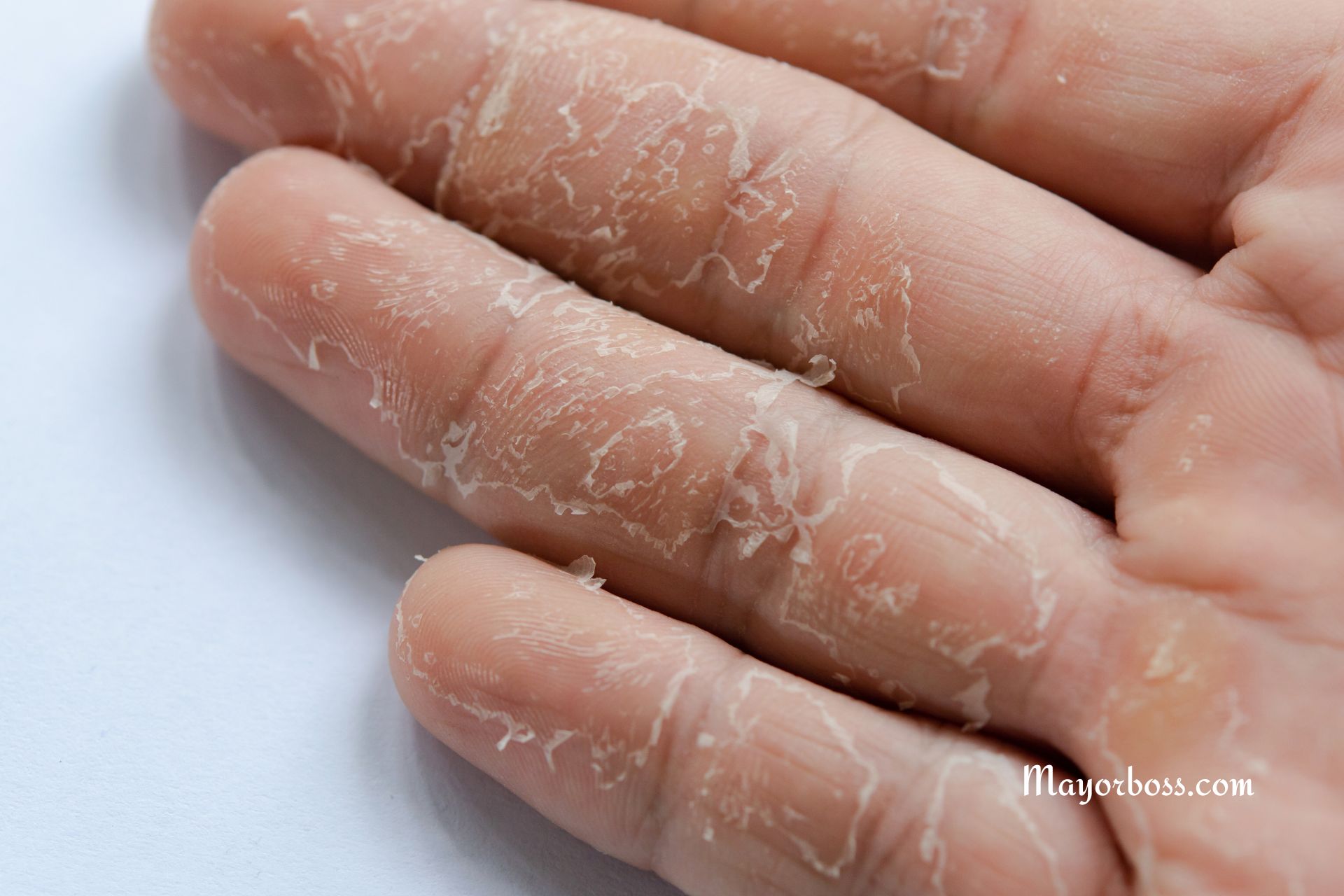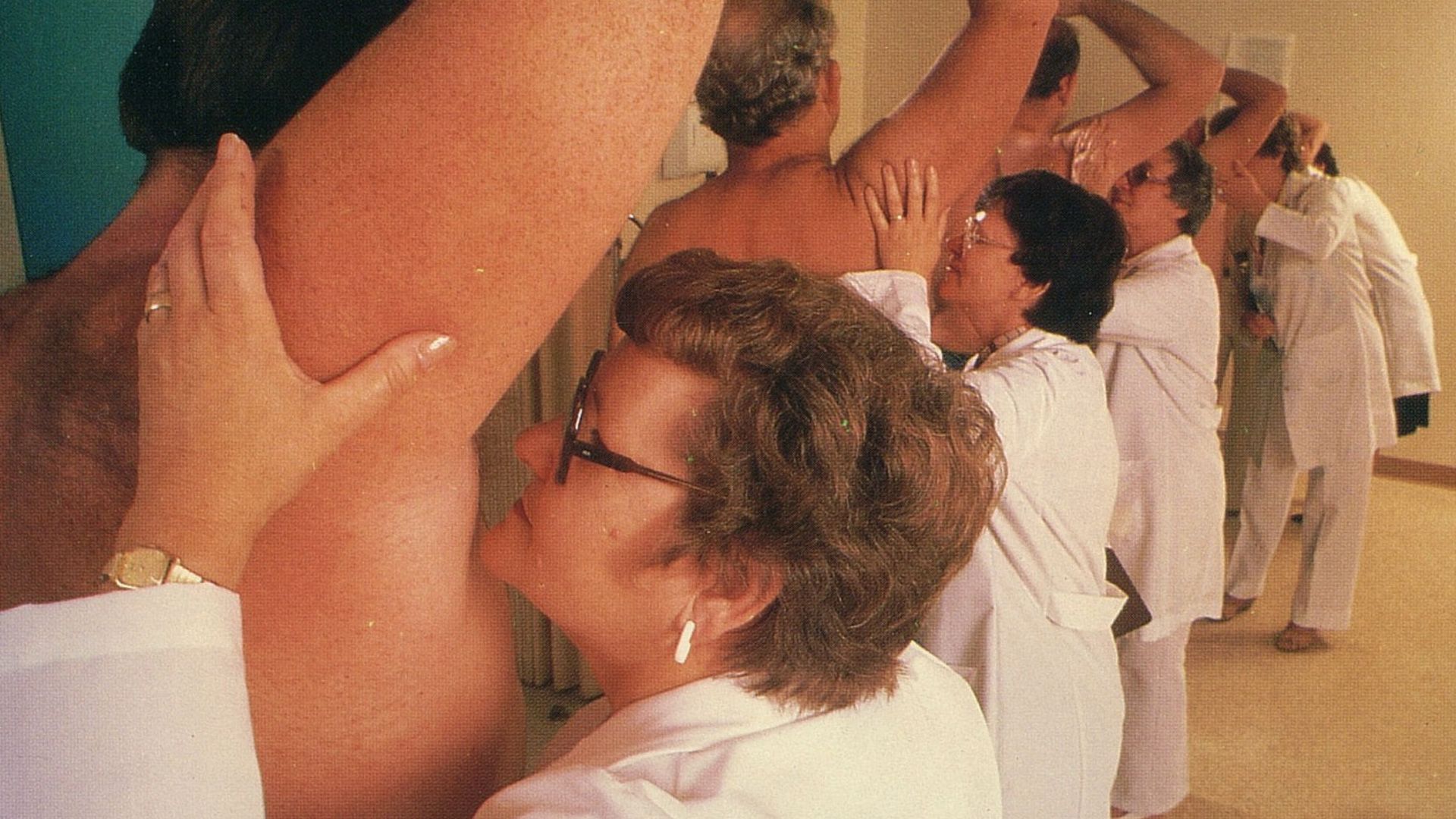How to Strengthen Weak Legs
If your legs feel weak or wobbly, you’re not alone. This guide walks you through what might be going on and how you can rebuild strength safely, step by step.

Ever feel like your legs just can’t keep up?
Maybe it’s walking up the stairs that leaves you winded. Or your legs tremble after standing too long. You might even catch yourself avoiding walks or skipping activities because your legs feel unsteady or tired. If that sounds familiar, it’s time to pay attention.
Weak legs can start slowly. At first, you might think you’re just tired. But over time, even everyday tasks can become hard. The good news? You can rebuild leg strength with the right approach, no matter your age.
Strong legs do more than help you walk. They support your balance, posture, and overall stability. They help you stay independent—whether it’s getting up from a chair, carrying groceries, or walking confidently. Weak legs increase your risk of falling, especially as you age.
Building strength now can protect your future mobility.
What causes weak legs?
Weak legs aren’t always caused by one single issue. Often, it’s a mix of things, such as:
- Lack of movement: Sitting too much causes your muscles to shrink and weaken.
- Poor circulation: When blood flow to the legs is limited, your muscles can’t get the oxygen they need.
- Nerve problems: Conditions like sciatica or peripheral neuropathy may lead to weakness.
- Arthritis or joint issues: Pain in your knees or hips can make you move less, which weakens the muscles.
- Nutrient deficiencies: Low levels of vitamin D, B12, or magnesium can affect muscle function.
- Aging: As we grow older, we naturally lose muscle mass—unless we work to keep it.
Treatment for Weak Legs
Start with movement, even if it’s small
If your legs are weak, starting might feel overwhelming. That’s okay. What matters most is consistency, not intensity. Begin with gentle activities to wake up those muscles.
Try this:
- Seated leg lifts: While sitting, lift one leg and hold for 5 seconds. Lower it slowly. Repeat 10 times per leg.
- Ankle pumps: Flex and point your toes up and down to stimulate blood flow.
- March in place: While holding on to a counter or chair, slowly lift one knee, then the other.
Do these daily. Small moves create real momentum.
Add resistance to build muscle
Once your legs are moving again, it’s time to challenge them a little more. Resistance helps your muscles grow stronger. You don’t need fancy equipment—just your body weight or simple tools like resistance bands.
Try these beginner-friendly exercises:
1. Wall sits
Stand with your back against the wall. Slide down slowly as if you’re sitting in a chair. Hold for 10–30 seconds, then stand up. This strengthens your thighs and glutes.
2. Chair squats
Stand in front of a chair. Lower yourself down as if sitting, then stand back up without using your hands. Aim for 10 reps.
3. Heel raises
Hold onto a chair. Lift your heels so you’re standing on your toes. Hold for 3 seconds. Lower back down slowly. Do 10–15 reps.
4. Side leg lifts
Hold a chair for balance. Slowly lift one leg to the side, keeping it straight. Lower it down. Repeat 10 times on each side. Do these exercises 3–4 times per week. Always move at your own pace. Rest if needed.
Don’t forget your balance
Balance training helps prevent falls and strengthens the muscles in your legs and core. Simple ideas include:
- Standing on one leg: Hold a chair and lift one foot off the ground. Try to stay balanced for 10–20 seconds. Switch legs.
- Tightrope walk: Walk in a straight line, heel to toe, slowly and with control.
The more you practice, the more stable you’ll feel.
Fuel your muscles from within
Muscles need the right nutrients to stay strong. Support your legs from the inside out:
- Protein: Helps rebuild muscle. Aim for lean meats, eggs, beans, or Greek yogurt.
- Vitamin D: Supports bone and muscle strength. You can get it from sunshine, salmon, or fortified foods.
- Magnesium and potassium: Found in leafy greens, bananas, nuts, and seeds—these help your muscles work properly.
- Water: Staying hydrated keeps your muscles energized and reduces cramping.
Consider talking to your doctor about checking your vitamin levels if your leg weakness has been ongoing.
Don’t push through pain
There’s a difference between muscle fatigue and real pain. If something hurts sharply or feels wrong, stop. Pain is your body’s way of saying, “Slow down.”
And if your leg weakness started suddenly or worsens quickly, see a doctor. It might be a sign of a nerve or circulation problem that needs attention.
Stay consistent
Strength doesn’t return overnight. But with steady effort, you’ll notice a change. In a few weeks, the stairs may not feel as steep. Standing might not feel like a struggle. That’s progress.
Even if you’re starting from zero, your muscles can rebuild. Your body wants to move—it just needs a little help getting started.
FAQs
1. How long does it take to strengthen weak legs?
Most people notice improvements in 4–8 weeks with regular exercise, but it depends on your starting point and consistency.
2. Can walking strengthen weak legs?
Yes. Walking is a great low-impact way to build leg muscles, improve circulation, and boost balance.
3. What’s the best exercise for very weak legs?
Seated leg lifts and ankle pumps are safe starting points. From there, you can progress to chair squats and wall sits.
4. Should I see a doctor if my legs feel weak?
Yes, especially if the weakness is sudden, one-sided, or comes with numbness, pain, or trouble walking. It could signal a medical issue.
5. Do I need gym equipment to strengthen my legs?
No. Many effective exercises use your own body weight. Simple tools like a chair or a resistance band can help, but aren’t required.






